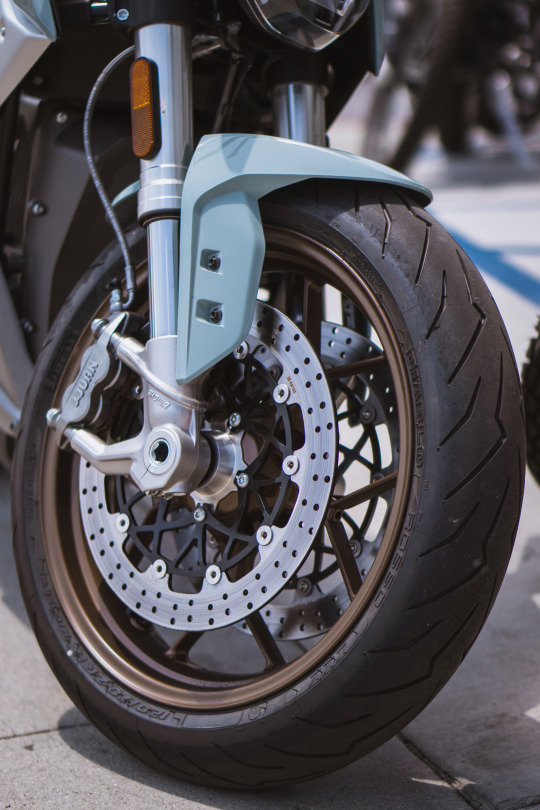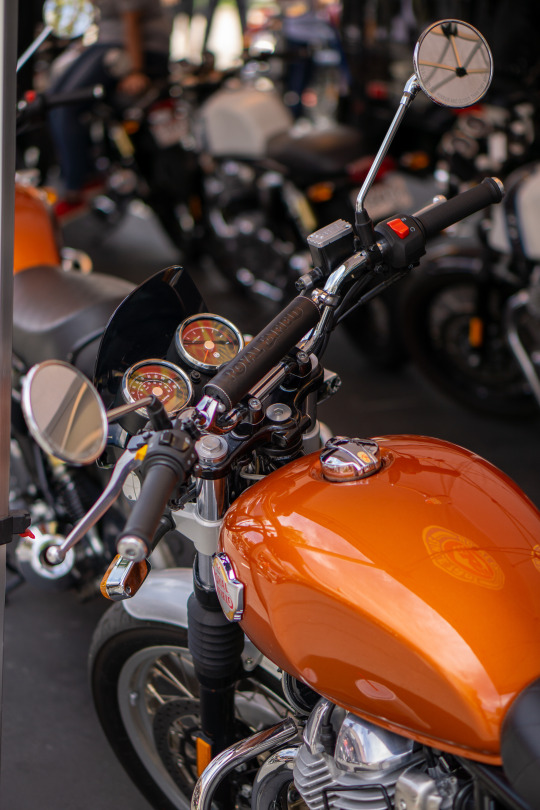#firstride
30 miles to break in my new cleats that I’m super stoked about! #cycling #chicksthatcycle #cleats #shimano #firstride
Post link
Ollie rode his first ride by himself at the fair last night! He turns left like a champ. We may have a NASCAR driver on our hands! #baldwincountyfair #fair #firstride #nascar #alabama (at Baldwin County Fair)
Post link
Selah’s first amusement park ride at the first amusement park I went to. Nostalgia is real.
•
•
•
#ourselahhope #welschtravels #firstride #toddlerlife @funlandrehoboth (at Funland Rehoboth Beach)
https://www.instagram.com/p/CREzi-TlD8c/?utm_medium=tumblr
Post link

Did you say 140 ft-lb of torque? This is gonna be fun…
My left hand extended for the clutch, but it came up empty. My left foot tapped down, but the shifter peg wasn’t there. As I rolled to a stop on Fairfax Blvd, I realized that I didn’t need to downshift. I didn’t need to rev-match. Hell, I didn’t even have to click into neutral once I was settled. What the hell was I on?
From the moment I rolled Zero’s new SR/F off the dealer’s lot, it felt like a foreign experience. Where was the grumble and burble of a combustion motor? Where was my trusty clutch lever? Where was the engine heat?
For me, motorcycles are synonymous with manual transmissions. The clutch modulates the power to the back wheel. The upshifts jolt the bike as you kick into the next gear. But with an electric motorcycle, the drive train is closer to that of a scooter, twist n’ go, and it wasn’t easy to get past that association. That is, until I hit 85 mph with the turn of the wrist!

With the lack of a transmission, the SR/F preserves as much power as possible and sends it directly to the 17″ rear wheel. Eliminating the transmission leaves us with just the engine. Can I actually call it an engine? Ok, powerplant, let’s go with that. The powerplant in the SR/F easily steals the spotlight on this bike. For touting 140 ft-lb of torque and 111 horsepower, it sure delivers all that power in a manageable fashion. I really wish I could see a dyno sheet for the bike (how would that be possible without RPM readings?), because I think it would contain the smoothest power curves known to man.
From takeoff, the torque feels like it’s closer to 70 ft-lb. It isn’t jarring. It rolls on in a controlled manner. It’s as if you were releasing the clutch slowing, though there isn’t one. But as you continue to crank the throttle, the torque ramps up and send you ripping through time and space like a fighter jet (it sorta sounds like a jet too).
Unlike Cruisers, where the torque starts out around 100 ft-lb and diminishes, or Supersports, where it tapers off while the horsepower continues to climb, the SR/F feels like the torque and horsepower escalate inseparably. It provides one of the smoothest, linear powerbands I’ve ever experienced on a motorcycle and is certainly encouraging for anyone looking to “go electric” in the future.
While I only rode on surface streets, and didn’t get a chance to toss her about in the twisties, the suspension held up like a champ. Los Angeles public roads are notorious for uneven pavement, potholes, and debris, but the suspension handled all the irregularities with ease. For me, suspension is best when it goes unnoticed and that’s exactly how I felt with the SR/F’s springs.

With fully-adjustable 43 mm Showa forks up front and a piggyback reservoir monoshock out back, the suspension is confidence inspiring and very accommodating. The ride comfort is high. The road chatter is low. The handling is predictable and snappy. Unlike the FZ-07 I rented in April, the SR/F doesn’t skimp in this category. That quality exhibits not only the capability of the bike but makes the rider want to exhibit their capabilities on the bike.
Speaking of the FZ-07, the riding posture of the SR/F is similarly neutral, if not slightly aggressive, but the attention to detail and aesthetic of Zero’s new naked truly set it apart from anything in this cluttered category and from everything else they’ve produced to this point.

The trellis frame, the futuristic front light, the tasteful mix of angles and curves all contribute the aggressive look and ultimately coalesce in a visually appealing motorcycle. For Zero, the design of the SR/F is a big leap from their past offerings. I’d compare their other models to Tesla’s lineup in the sense that they opt for a minimalistic aesthetic. When it comes to simple designs, there’s a very thin line between looking refined and looking generic. Historically, Zero’s models were on the wrong side of that fence, but the SR/F is changing that for the company. The fit and finish should be considered “premium”, and that level of quality is reflected in all the separate components of the bike, including the brakes.
With radial-mounted clampers on 320 mm dual discs, the SR/F practically stops on command. The J.Juan branded calipers pack a suitable amount of stopping power, considering they’re stopping a 500 lb bike and they aren’t emblazoned with the Brembo badge. The feel was responsive yet smooth, stiff but progressive.

Out back, you have a single 240 mm rotor and a 2-pot caliper. Compared to the robust braking components up front, the rear would seem considerably underpowered, but it does an above average job of slowing down the bike (albeit, my “average” standards are quite low, as I ride a Harley). Coupled with Bosch Advanced MSC (a fancy acronym for traction/stability control), the braking system of the SR/F upheld the premium status of the bike. Sure it doesn’t offer the name recognition of Beringer or Brembo, but they get the job done. And isn’t that what brakes should be about, getting the job done?
Now, I know what you’re probably saying:
Yeah, that’s all great and all, but would you buy one yourself?
And the short answer is no, but let me explain. The SR/F is a revolutionary machine. In my humble opinion, it marks a sea change for the electric motorcycle market and ups the ante for competitors like Lighting, and dare I say, Harley-Davidson.
But the infrastructure hasn’t caught up with the product yet. I can’t confidently say that I would (or could) go on a Pan-American trip with this or any electric motorcycle yet and that’s disheartening because I know that will act as a barrier for potential customers.
As the technology progresses and charge stations are erected, I know the viability of these machines will increase. They won’t just be considered a commuter bike. You won’t have to stay within a certain distance from home when you go for a rip about town or through the twisties. But right now, I don’t have the disposable income to spend $20K+ on a motorcycle that would need to stay regional.
Electric vehicles (cars & bikes) are the future. Whether you’re happy, excited, or ready for that change is beside the point. I fully intend to be an adopter but we’re currently in a stop gap of that transition and I need the baton to be firmly in the grasp of EVs before I make the jump (I’m never selling the Harley though). To me, it’s inevitable, but only time will tell when the takeover takes place.
However, if you have the money to purchase an SR/F, do it, now! If you’re someone fortunate to own multiple bikes, this one would be a purposeful horse in your stable. At my income level, I’m relegated to bikes that are Swiss Army knives but the SR/F could easily be your X-ACTO knife.
Whether you’re opposed to electric motorcycles or a proponent of them, do yourself a favor and give one a try. It’s a motorcycle, guys, you’d be hard pressed not to have fun.
Let’s just get this out of the way, I wouldn’t buy the GT 650 or INT 650 as my second bike. I’d buy it as my first.

Up to this point, I’ve been judging motorcycles based on my personal search for a second motorcycle. My criteria consisted of 4 qualities: cheap, dirt-capable, lightweight, and powerful (added after I rode the Himalayan). On that note, neither of Royal Enfield’s new Twins meets those standards. Let’s just get this out of the way, I wouldn’t buy the GT 650 or INT 650 as my second bike. I’d buy it as my first.
Due to my first experience with Royal Enfield’s Himalayan, I had low expectations for the brand’s new 650s. The underwhelming power delivery, over-anxious brakes, and inconsistent suspension of the mini-ADV left me skeptical of Royal Enfield full lineup. It’s safe to say that I reeked of a dismissive air when I swung a leg over the INT, but my generalization of the brand was quickly remedied with the first whack of the throttle.
Every motorcyclist knows the feeling of a good pull. It’s when the acceleration pushes you back in the saddle, when the rear shock compresses and the fork lightens, when you tighten your grip on the handlebars for fear of sliding off the back. My first pull on the INT 650 delivered such a sensation, so much that I said (out loud), “Whoa! That’s more like it!”

That 648 cc, single overhead cam engine that sent me hurtling through space and time happens to be the heart of the new Twins. With a torquey low-end power delivery, the engine boasts an exciting edge yet retains an affable disposition. Whether you’re running the Twins through their paces or cruising about town, the middleweight mill is happy to comply. For those hipsters looking for a CB750 or XS650, you no longer have to sacrifice reliability for aesthetics. The GT and INT 650 gives you the best of both worlds with smooth, efficient EFI fuel distribution and cafe racer styling.
In my short time with the models, engine heat never factored into the equation either. Even with that day’s temperature topping 90° F, the oil/air-cooled mule inside the Twins never skipped a beat, even when the pace hastened. Although Royal’s 650s did get up to interstate speeds without hesitation, I should note that both models feel more at home on surface streets. The torquey motor benefits the urbanite from stoplight-to-stoplight and the lack of wind protection would quickly fatigue riders on longer journeys.
Along with the punchy power delivery, the width of the frame, handlebars, and pegs allow the commuter to squeeze through the narrowest of spaces. I wish Royal’s Twins were on the market when I started riding because they’re great options for those just starting out, especially when it comes to the controls.

Like all of Royal Enfield’s lineup, the GT & INT opt for simplicity. The company tends to label its approach as “Purist” and a quick glance at the controls will drive that point home. Without the luxury of a TFT display, cruise control, or heated grips, the controls of the Twins are minimalist. That facet helps developing riders concentrate on the road instead of fiddling with menus and settings, allowing them to get comfortable with the clutch, throttle, and most importantly, the brakes.
Both models boast a single 320mm floating rotor with a two-piston ByBre caliper up front and a 240mm floating rotor clamped by a single-piston caliper out back. ByBre, the Indian subsidiary of Brembo, provides the braking components. I know what you’re thinking (Indian-made Brembos?), but the stopping power achieved with these “budget” calipers really do the job. Coupled with the 41mm fork and piggyback shocks, the braking system brings the hefty 450 lb bike to an even and controlled stop. Yes, neither component truly stands out on these bikes, when it comes to brakes and suspension, that’s usually a good thing!

It’s true that the INT & GT 650 share the same 648 SOHC engine, ByBre brakes, double-cradle steel frame, 41mm conventional forks, and coil-over rear suspension. However, they do differ in two major categories: aesthetics and ergonomics. The INT opts for a pseudo-scrambler look with high-rise handlebars (w. crossbar), bench-style seat, and mid-mount pegs. While the GT sports proper cafe racer cosmetics with clip-ons, single-seat (w. cowl), and rear sets.
Despite the ergo divergence, both the Twins handled responsively, although I wouldn’t call them lithe. The added girth of the larger engine means that the supporting package needs beefing up (compared to other Royal Enfield models). As a result, the 650s weigh more than any other Royal Enfield and the extra poundage is evident in the corners. I wouldn’t label the Twins as unwieldy, but I also couldn’t praise them as flickable.

As a cruiser rider, the upright posture of the INT felt more natural, but the GT also proved the advantages of aggressive body positioning. With my abdomen lower to the tank, wind resistance was less of a factor and the direct input of the clip-ons resulted in a more reactive quality from the front end. Though the INT responded well to all of my inputs, I could dart through traffic on the GT (even if that feeling is primarily psychological - due to the ergonomics). For that reason, I think I’d side with the GT, as I’d primarily use both of Royal Enfield’s 650 in the city - and that’s where most consumers will ride these bikes.
With a base MSRP of $5,799, the GT & INT would be a viable starter bike for commuting students and city-dwellers. While most people warn novice riders against buying a 600+ cc motorcycle out of the gate, the 42 horses and 37 ft-lb of torque make the Twins manageable for newcomers.
The retro-styling of the models will definitely appeal to a younger crowd and the affordable price point keeps them within reach. New riders tend to focus more on the aesthetics, but they will inevitably drop the bike (…a few times) and a lower price tag always helps to cushion those falls. If I were in the market for a first bike now, I would seriously reconsider buying the Harley-Davidson Sportster Iron 883, and I LOVED that bike.

If you’re new to the sport or searching for your first bike, I’d strongly suggest a test ride of the GT/INT 650. The combination of aesthetics, price point, approachable demeanor, and simplicity make Royal Enfield’s Twins a very attractive package. Not to mention, the 3-year, unlimited miles warranty with roadside assistance, reinforces the build quality of these machines. Believe me, If the company released a dirt-capable twin at a lighter curb weight, I’d be all over it. While that’s irrelevant when it comes to these models, the experience wasn’t for not.
For me, Royal Enfields Twins were cheap, they were powerful, they just didn’t have taller suspension and knobbies that I’m looking for. Though I don’t plan to purchase the GT or INT 650, I learned that I will need my second bike to be commute-capable. The narrow footprint of the controls illustrated the importance of squirting through tight spaces in an urban environment. I guess my next bike will not only have to be cheap, dirt-capable, lightweight, and powerful but also commuter-friendly. I’m sure I’ll find that package in time, but for now, it’s on to the next bike!



